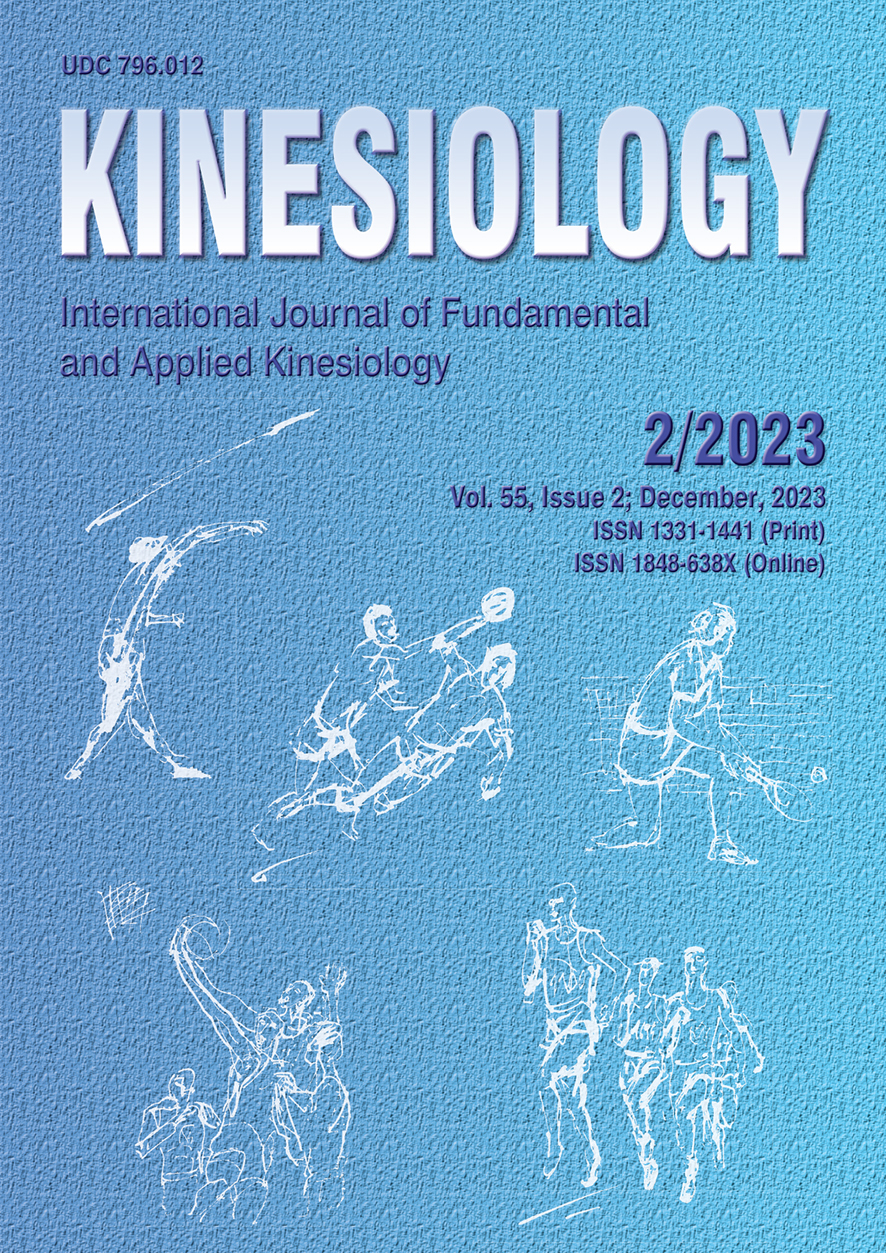EFFECTS OF PLYOMETRIC JUMP TRAINING ON RUNNING ECONOMY IN ENDURANCE RUNNERS: A SYSTEMATIC REVIEW AND META-ANALYSIS
Abstract
Running economy (RE) has a strong relationship with distance running performance and is defined as the energy demand for a given velocity. Plyometric jump training may improve RE. The present study aimed to assess the effects of plyometric jump training on endurance runners’ running economy and to estimate the effectiveness of program duration, training frequency, total sessions, age, training status and velocity. A literature search was performed using PubMed/MEDLINE, Web of Science, and SCOPUS databases. Subgroup and single training factor analyses of program duration, frequency, total sessions, chronological age, training status, and running velocity were performed. A random-effects model for meta-analyses was used. Eighteen studies were selected for the systematic review and 10 for the meta-analysis. A trivial effect was noted for plyometric jump training on running economy (ES=0.19). However, plyometric jump training combined with resistance training revealed a large effect on running economy (ES=1.34). Greater running economy improvements were noted after training interventions with >15 total sessions (ES=1.00), >7 weeks (ES=0.95) and >2 days/week (ES=0.89). The youngest (ES=0.95) and highly trained participants (ES=0.94) with faster velocities (ES=0.95) obtained better results. Our findings highlight the effect of plyometric jump training that may improve running economy, particularly in combination with resistance training, after longer-term interventions (i.e., >15 total sessions, >7 weeks), with greater frequency, and among younger and more highly trained runners, especially during running at higher competitive velocities.
Key words: running performance, human biomechanics, stretch-shortening cycle, high-intensity interval training, resistance training
Downloads
Additional Files
Published
How to Cite
Issue
Section
License

This work is licensed under a Creative Commons Attribution-NonCommercial 4.0 International License.
At Faculty of Kinesiology we recognize that access to quality research is vital to the scientific community and beyond. Kinesiology is non-profit journal and all costs of publishing and peer review process are covered by the publisher itself or other funding sources like Ministry of Science and Education of the Republic of Croatia. Full text papers are also available free of charge at http://hrcak.srce.hr/kineziologija. There are no restrictions on self archiving of any form of paper (preprint, postprint and publisher's version).
Articles are distributed under the terms of the CC BY - NC 4.0
Kinesiology does not charge any fees to authors to submit or publish articles in our journal.


